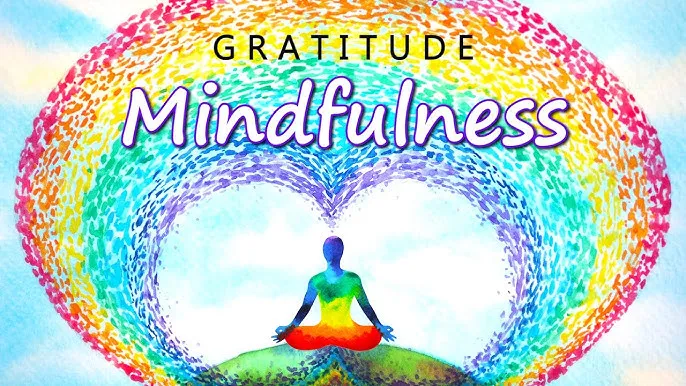In a world that constantly asks for more—more success, more possessions, more validation—gratitude feels like a quiet rebellion. It is the gentle whisper that reminds us that happiness is not found in accumulation, but in appreciation. The simple act of being grateful transforms how we see our lives. It allows us to find beauty in the ordinary, meaning in the mundane, and joy in the moments we once overlooked.
This idea, “A grateful heart finds joy in every day,” is more than a comforting phrase. It’s a philosophy for living—a mindset that reshapes our perception of reality, relationships, and even ourselves.
Let’s journey deeper into how gratitude can become not just a feeling, but a daily practice that fills life with contentment, resilience, and quiet joy.
Table of contents
- The Power of Perspective
- Science of Gratitude: Why It Works
- Finding Joy in Everyday Moments
- The Art of Appreciating What You Already Have
- Transforming Adversity Through Gratitude
- How Gratitude Shapes Relationships
- Practicing Gratitude: Everyday Rituals
- Gratitude and Mindfulness: A Beautiful Partnership
- The Ripple Effect of Gratitude
- Children and Gratitude: Planting the Seeds Early
- Gratitude in the Digital Age
- Gratitude and Self-Compassion
- How Gratitude Enhances Health
- Stories of Gratitude in Action
- Living a Grateful Life
- The Spiritual Essence of Gratitude
- How to Keep Gratitude Alive in Difficult Times
- Building a Gratitude-Based Future
- Conclusion: The Joy of a Grateful Heart
The Power of Perspective
Gratitude doesn’t change what we have—it changes how we see what we have.
When we focus on what’s missing, life feels heavy. When we focus on what’s present, life feels abundant. Gratitude shifts our attention from lack to fullness, from frustration to fulfillment. It acts like a lens that filters out the noise of dissatisfaction and magnifies the beauty that already exists around us.
Consider a morning routine: the warmth of sunlight spilling through the window, the familiar aroma of coffee, the sound of laughter from a loved one. These are the quiet blessings that shape our emotional landscape. But they often go unnoticed—overshadowed by busyness or complaint. Gratitude brings them back into focus.
When we begin to notice the small gifts woven into our days, life stops being something to get through and becomes something to savor.
Science of Gratitude: Why It Works
Gratitude is not just poetic—it’s powerful psychology.
Research in positive psychology shows that gratitude activates parts of the brain associated with joy and connection. Studies have found that regularly practicing gratitude can:
- Increase dopamine and serotonin, the brain’s “happiness chemicals.”
- Lower levels of cortisol, reducing stress and anxiety.
- Improve sleep quality and overall well-being.
- Strengthen relationships and empathy.
- Build emotional resilience in the face of challenges.
When we express thankfulness—whether through journaling, prayer, or simple reflection—we rewire our minds to seek out the positive. This doesn’t mean ignoring pain or pretending everything is perfect. Rather, it means acknowledging that even within difficulties, there are moments worth appreciating.
Gratitude trains the brain to see hope.
Finding Joy in Everyday Moments
Joy isn’t always found in extraordinary experiences. Often, it hides in the small and ordinary—like a soft breeze on a warm day or a shared smile with a stranger. The heart that practices gratitude knows how to uncover joy even in simplicity.
Imagine walking or cycling through a quiet park. The rhythm of your breath, the rustle of leaves, the play of light through trees—none of these moments are spectacular by worldly standards. But when approached with gratitude, they become profound. They remind us of connection: to nature, to stillness, to life itself.
Gratitude invites us to slow down. It tells us that the moment we are in, right now, is enough.
The Art of Appreciating What You Already Have
Modern culture thrives on dissatisfaction. Advertisements tell us we’ll be happy when we buy something new, achieve a new milestone, or reach a higher status. But once we get there, the feeling is fleeting. The mind moves the goalpost again.

Gratitude breaks that cycle. It roots us in the present.
Instead of asking, “What’s missing from my life?” gratitude asks, “What’s already good in my life?”
Instead of chasing more, it teaches us to cherish what’s here.
Try this simple reflection: think of three things in your life that bring you peace or comfort right now. Maybe it’s your health, your friendships, your morning walk, or even the ability to read these words. Take a slow breath and thank life for them. That small moment of recognition begins to shift everything.
Transforming Adversity Through Gratitude
Gratitude does not deny hardship. It transforms it.
When life feels difficult, the heart naturally leans toward frustration, grief, or despair. But gratitude can become a quiet act of courage. It helps us see that pain and growth often coexist.
People who have endured loss, illness, or failure often describe gratitude as the thread that pulled them through darkness. They learned to be thankful for the lessons hidden within suffering—the resilience it built, the empathy it awakened, or the strength it revealed.
Even in challenging seasons, there are things to hold on to—a friend’s support, a small victory, or the inner calm that says, “This too shall pass.” Gratitude doesn’t erase pain, but it adds light to it.
How Gratitude Shapes Relationships
When we express gratitude toward others, something remarkable happens—it strengthens bonds.
Saying “thank you” is more than good manners; it’s emotional nourishment. It makes others feel seen and valued. Whether it’s thanking a partner for their patience, a colleague for their help, or a friend for their kindness, gratitude fosters mutual respect and trust.
In relationships, gratitude acts like glue. It shifts focus from flaws to strengths, from complaints to appreciation. A grateful partner sees effort; a grateful friend sees presence. Over time, this creates a cycle of positivity that deepens emotional connection.
Gratitude says, “I notice you, and I value what you bring to my life.” Those words can heal more than we realize.
Practicing Gratitude: Everyday Rituals
Gratitude becomes transformative when it’s practiced consistently. Here are simple rituals that can help cultivate a grateful heart:
1. Keep a Gratitude Journal
Write down three things you’re thankful for each day. They can be as small as a good cup of tea or as big as a personal achievement. The act of writing helps anchor those feelings into memory.
2. Begin and End Your Day with Thanks
Start your morning by acknowledging one thing you’re looking forward to. End your day by reflecting on one thing that went well. It creates emotional balance and perspective.
3. Express Gratitude to Others
Send a note, text, or even a verbal “thank you.” Genuine appreciation strengthens relationships and spreads positivity.
4. Practice Mindful Gratitude
During daily tasks—like cooking, walking, or working—pause to notice the details. Feel the textures, smells, and sensations. Say a silent thank-you for the experience itself.
5. Gratitude Meditation
Spend a few minutes each day breathing deeply and focusing on the people and moments that bring you joy. Visualization amplifies emotional connection to gratitude.
Small, consistent acts like these rewire your emotional default from worry to wonder.
Gratitude and Mindfulness: A Beautiful Partnership
Mindfulness is the awareness of the present moment; gratitude is appreciation for that moment. Together, they form a powerful duo.

Mindfulness helps us notice what’s happening. Gratitude helps us value it.
When we combine the two, life feels richer. Washing dishes becomes a meditation on warmth and rhythm. Waiting in traffic becomes a chance to listen to music. Even challenges become teachers rather than obstacles.
This pairing is especially powerful in an age of distraction. By grounding ourselves in awareness and appreciation, we reclaim presence—the one thing we often overlook in our quest for more.
The Ripple Effect of Gratitude
Gratitude doesn’t just change the individual—it changes the collective.
A grateful person radiates positivity. Their words are kinder, their patience deeper, and their energy more grounded. This, in turn, influences others. When we express thankfulness openly, it encourages those around us to do the same. A small “thank you” can start a ripple that brightens an entire community.
Imagine a workplace where leaders express appreciation regularly, or a family where gratitude is part of daily conversation. The tone shifts. Stress decreases. Cooperation grows. Gratitude becomes contagious.
In a society that often emphasizes competition, gratitude invites collaboration. It reminds us that we are interconnected—that joy shared is joy multiplied.
Children and Gratitude: Planting the Seeds Early
Teaching children gratitude is one of the greatest gifts adults can offer. It helps them develop empathy, patience, and resilience.
Parents can nurture gratitude through small, consistent practices—encouraging kids to say thank you, to reflect on good moments before bed, or to help those less fortunate. These habits build a mindset that lasts into adulthood.
Children who grow up with gratitude learn to measure success not just in achievements, but in appreciation. They learn that happiness isn’t about having everything—but cherishing what they have.
Gratitude in the Digital Age
In our hyperconnected world, it’s easy to forget gratitude. Social media often amplifies comparison—who’s traveling, who’s succeeding, who’s doing better. Gratitude acts as a gentle antidote.

Instead of scrolling with envy, we can scroll with appreciation: “I’m grateful for their joy,” or “I’m thankful for the inspiration this post gives me.”
We can also use digital tools positively—sharing gratitude lists, celebrating others’ achievements, or posting messages that uplift.
Technology doesn’t have to disconnect us; with a grateful mindset, it can connect us more meaningfully.
Gratitude and Self-Compassion
It’s easy to thank others, but often hardest to thank ourselves. Yet self-gratitude is vital for inner peace.
When we acknowledge our efforts, forgive our mistakes, and celebrate small victories, we nurture self-worth. Gratitude toward self is not pride—it’s acceptance. It says, “I am enough, and I’m grateful for the person I’m becoming.”
Try saying this silently:
“I’m grateful for how far I’ve come, for the lessons I’ve learned, and for the strength that keeps me going.”
That small affirmation can soften self-criticism and strengthen confidence.
How Gratitude Enhances Health
The connection between gratitude and health is profound. Studies have shown that grateful individuals experience:
- Lower blood pressure and improved heart health.
- Stronger immune systems.
- Better sleep and reduced insomnia.
- Lower anxiety and depression levels.
- Higher energy and motivation.
When we live with gratitude, our bodies respond with balance. Stress hormones decrease, and positive hormones increase. The body thrives when the mind is at peace.
Gratitude, then, is not just emotional medicine—it’s physical wellness.
Stories of Gratitude in Action
Across the world, countless stories remind us that gratitude can change lives.
A woman recovering from illness keeps a “thank-you jar,” adding notes daily about small joys—sunlight, a friend’s call, her body’s strength. Over time, her jar becomes a symbol of hope, showing her that even pain carries blessings.
A teacher asks her students to share one thing they’re thankful for every morning. The classroom atmosphere transforms—discipline issues drop, and empathy rises.
An elderly man writes thank-you letters to people from his past—teachers, friends, coworkers. Each letter reawakens old connections and fills his later years with peace.
These stories illustrate one truth: gratitude doesn’t depend on circumstances. It depends on choice.
Living a Grateful Life
Gratitude is not a one-time feeling; it’s a lifelong practice. It can become part of how we walk through the world.

To live gratefully is to approach each day as a gift. It’s to wake up and say, “I’m here. I have breath. I have another chance.” It’s to look around and see blessings where others might see routine.
It’s also to face challenges with grace, to say, “This hurts, but I can still find something good here.” Gratitude doesn’t deny pain; it balances it with perspective.
Over time, gratitude becomes a way of seeing. You stop waiting for big joys and start celebrating small ones—because you realize they were big all along.
The Spiritual Essence of Gratitude
Every wisdom tradition honors gratitude as sacred.
In Buddhism, it’s a form of mindfulness. In Christianity, it’s thanksgiving to God. In Hinduism, it’s seen as part of dharma—right living. In Islam, gratitude (shukr) is central to faith and contentment.
Though expressed differently, the essence is the same: to be grateful is to acknowledge that life itself is a gift. Gratitude connects us to something larger than ourselves—a sense of divine generosity, universal love, or the miracle of existence.
When the heart is grateful, it is at peace.
How to Keep Gratitude Alive in Difficult Times
When storms come—and they will—it’s easy to lose sight of gratitude. But those are the moments when we need it most.
Here’s how to keep gratitude alive:
- Pause and breathe. Even one slow breath can reconnect you to presence.
- Name one thing still good. Even in loss, something remains—love, memory, strength.
- Seek perspective. Hardships are temporary; growth is lasting.
- Reach out. Gratitude grows when shared with others who remind us of light.
- Trust in cycles. Every ending carries the seed of a beginning.
Gratitude does not erase pain, but it gives pain purpose. It transforms wounds into wisdom.
Building a Gratitude-Based Future
Imagine a society where gratitude is a value as strong as ambition. Where workplaces thank more than they criticize. Where communities uplift rather than compete. Where families express appreciation daily.
It starts with individuals—one grateful heart at a time. Every act of thankfulness becomes a thread in the fabric of a kinder world.
When we live with gratitude, we not only find joy in each day—we help others find it too.
Conclusion: The Joy of a Grateful Heart
To have a grateful heart is to live with open eyes—to see beauty not as something rare, but as something constant. Gratitude transforms ordinary days into celebrations, routine tasks into blessings, and relationships into sacred bonds.
It doesn’t require wealth, fame, or perfect circumstances. It simply asks for awareness—the willingness to notice the gifts already here.
So, the next time you step outside, breathe deeply. Feel the air, the light, the quiet pulse of life around you. Smile, not because everything is perfect, but because you are present to it all.
A grateful heart truly does find joy in every day—because it realizes that joy was never missing. It was simply waiting to be seen.
Stay Inspired on Your Gratitude & Joy Journey
If this article reminded you that joy often begins with a thankful heart, here are a few more uplifting reads to help you embrace presence, positivity, and simple everyday happiness:
- The Power of Gratitude: How Practicing Thankfulness Improves Mental and Physical Health – Explore how gratitude reshapes your mindset and boosts overall well-being.
- The Science of Happiness: How Mindfulness Boosts Emotional Well-Being – Learn how mindfulness helps cultivate deeper joy and emotional balance.
- The Art of Letting Go: Embracing Change with Grace and Courage – Create space for peace by releasing what no longer serves you.
- How to Cultivate Self-Compassion Through Mindful Living – Strengthen your inner kindness — because joy begins within.
- The Beauty of Beginning Again: Finding Hope in Fresh Starts – A gentle reminder that every day offers a new reason to smile.
